CONTEXT
This Project began posing two questions. How widespread is the problem of sexual abuse by church members in Argentina? Is there any method for hiding information by the institution?
In the absence of an official investigation, we began to analyze lists of different victims’ associations, but we found that many of them did not have reliable sources. Considering this circumstance, we decided to do our list. So we formed a team of nine journalists and divided up the cases. We contacted courts, dioceses, victims and offenders, and prepared a file with the main data on each accused person.
Investigation found that, at least, there are 63 priests and religious persons of the Argentine Catholic Church with accusations consistent with sexual abuse in the last 20 years. It also found that the institution itself set up a system of cover-up through transfers.
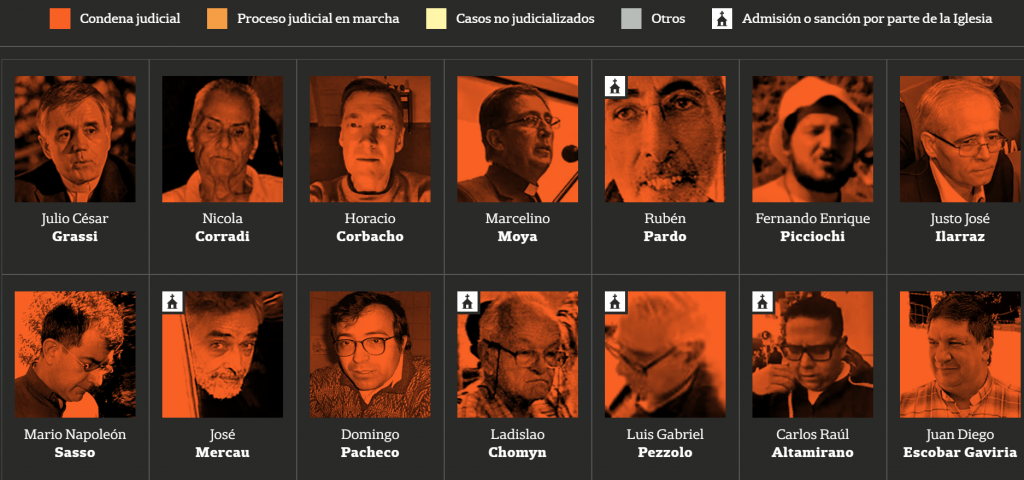
Upon being informed of a criminal complaint filed against one of the priests or religious persons in their diocese, it was common practice for the bishops to send them to another jurisdiction without previously informing them of the accusation behind the transfer. This is how it appears from the analysis of judicial and ecclesiastical documents and sources made by La Nación. These transfers gave offenders impunity and bring about a lot of pain to the victims.
The list of 63 persons with criminal complaints includes 18 cases with a legal judgement, 21 cases with legal proceedings in course and 24 persons with criminal complaints (in four of the cases there was a process that did not continue). In addition, the Church admitted guilt or penalized the persons involved in, at least, 23 of these cases. In 12 cases, the Church removed their clerical status, the maximum penalty that the institution applies. The project also includes video, audio and text testimonies from the victims of many of the accused.
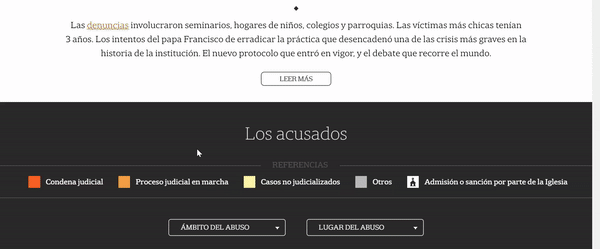
“This is like a swipe that takes away innocence”, said Pablo Huck. In 1993 and 1994, when he was 14 years old and was altar boy in Santa Rosa de Lima Church in Villaguay, Entre Ríos, Priest Marcelino Moya abused him in his bedroom.
Then, we looked for details of movement of priests accused and we contacted clerical sources that confirmed us what has been clear from the analysis of the files: these transfers were a hiding system. It was a ‘pastoral praxis’, a priest admitted.
DESCRIPTION
After the difficult preparation of the 63 files of the accused religious persons was completed, there were 12 stories with several approaches to the subject, including reports on the situation in other countries, stories of victims and explanations of the possible causes of the problem. The next step was to transform all this information into an attractive format for the reader. We looked for a storytelling system to display on the newspaper’s digital platform and another one for the paper edition. We wanted that the investigation would be presented according to its force.
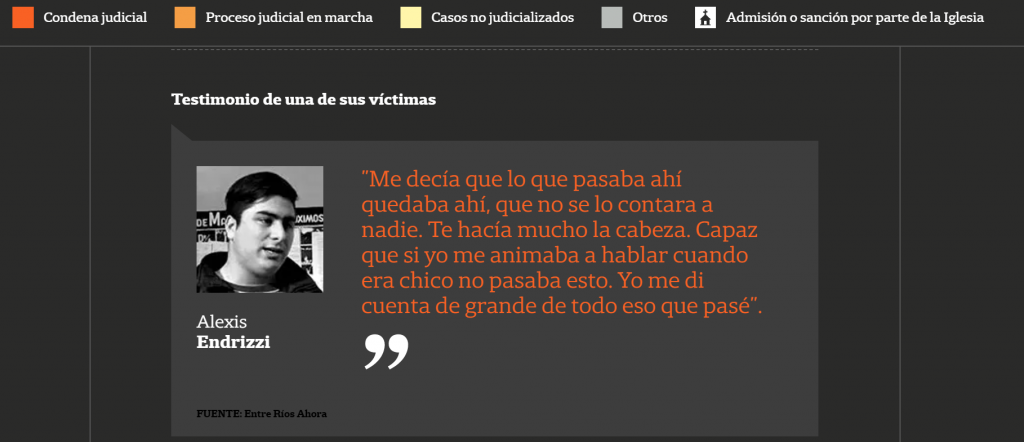
Together with the newspaper visualization team, we developed an interactive piece that allows to navigate through the files of the accused persons and the testimonies of their victims. We also included the central text of the story, the different visualizations and the hyperlinks to the rest of the titles of the production. The idea was to have a single piece that would be attractive and cover the entire investigation.
STRATEGY AND IMPACT
It was a difficult process due to the data collection work involved. We analyzed hundreds of cases until we had a list of 63 criminal complaints. The Church does not provide information and in most dioceses the doors were closed to us. We had to investigate in courts throughout Argentina. It was a huge effort to gather testimony of victims and the attempt to contact their offenders.
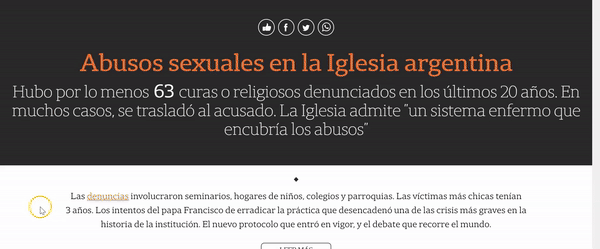
Impact
Three days after the news story, the Church in Chile displaced Roberto Barco, one of the priests mentioned on the report, from the parish in the Southern part of the country. He had been accused of abuses and then, he was transferred. After one week, Justice accused former bishop of Orán (Province of Salta, Argentina), Gustavo Oscar Zanchetta, another of the priests mentioned. Ten days after, in Tierra del Fuego, a Southern province of Argentina, another of the priests included in the list was convicted. The Archbishopric of Salta, with, at least, six priests and one nun under judicial investigation, made a new protocol establishing the procedure in case of criminal complaint.
There were also dozens of private messages from victims that we received. Many of these messages were received in a form that we linked in all the stories of the production. For those persons who preferred to act anonymously, we included a space for them to give us information. The most visible public consequences of the investigation was added the great impact on social media.
As regards metrics, 18 news stories were published under tag Abuses on Church. It generated 180,407 page views and 73.373 comments.
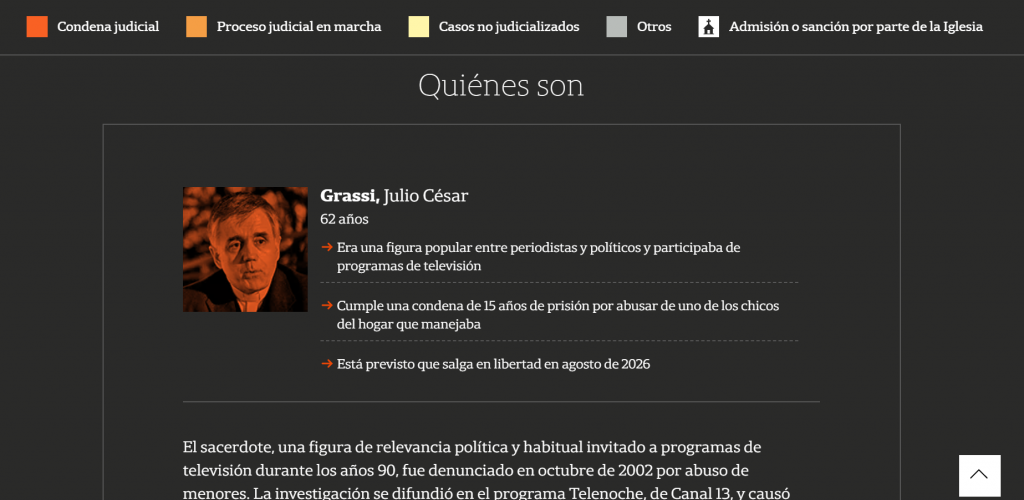
TECHNOLOGY USED
Frontend was developed in Javascript using jquery.js as main framework. As regards content, it was used Google Spreadsheet as platform for uploading interactive elements (text, photographs, videos, etc.) and the Google API for parsing and implementing these contents in the interactive design.
ESTIMATED NUMBER OF PERSONS WORKING ON THE PROJECT
This project took one year and on its biggest demand, included a team of 25 persons. There were journalists, infographic professionals, data analysts, programmers, photographers, editors and designers.